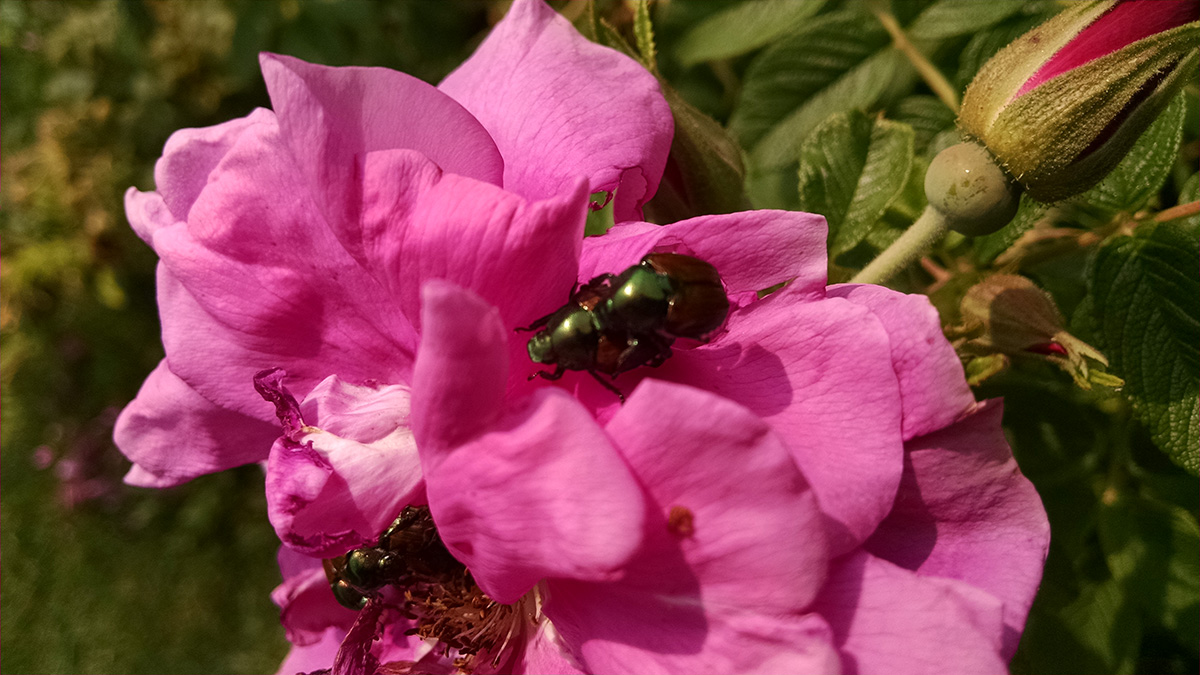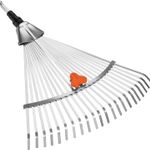
Support your plants. Top-heavy plants such as delphiniums (Delphinium spp. and cvs., Zones 3–8), dahlias (Dahlia spp. and cvs., Zones 8–11), and lilies (Lilium spp. and cvs., Zones 4–9) will benefit from additional support to keep them upright in heavy wind and sporadic summer storms. This can be accomplished with many techniques, from scrap sticks and twine to more formal stands and rings.

Divide perennials. Summer does not seem like the ideal time to divide perennials, but there are several that can be divided in August, such as Siberian iris (Iris siberica, Zones 2–9), bleeding heart (Dicentra spp. and cvs., Zones 3–9), bloodroot (Sanguinaria canadensis, Zones 3–8), and Oriental poppy (Papaver orientale, Zones 3–9), to name a few. Just be sure to water the divisions well into fall to ensure they get established before winter arrives and the ground freezes. Learn more about dividing perennials here.

Monitor for diseases and pests. The heat and humidity of August can be the perfect environment for diseases such as powdery mildew to get established and take off. Routinely monitor your plants for signs and symptoms of disease, and promptly remedy or remove diseased leaves and plants from your garden, as fallen or composted plant material can harbor the disease and continue the cycle. Watch for unwanted insects as well, as many will be active this month.

Keep harvesting your vegetables. If you are like me, eventually you start to fall behind on harvesting edibles such as green beans, peas, cucumbers, and zucchini, which results in overly ripe or oversize produce and a decline in additional growth. Keep up the harvesting to promote production throughout the season. If you can’t use all the produce yourself, give some to your neighbors. Learn when and how best to harvest your fruit and vegetables here.

Make sure new additions stay well watered. The heart of summer is here, and rains are becoming less frequent while scorching days become more common. Hopefully by now, any newly planted items have gotten a chance to get established to help them withstand those dry periods, but during extreme dryness, it is still important to provide adequate moisture. It only takes missing one or two key waterings to ruin new investments in your garden, so pay attention to what your plants are telling you and water, water, water!

Begin to harvest seeds. Collecting and saving seeds is a great way to grow more of the plants you love. The offspring may look like the parent or even have a completely different look, which makes it exciting as well. Using your pruners or a pair of sharp scissors, clip off the seedpod or seed head (similar to deadheading), and place it in a paper bag. (Plastic bags can trap moisture and result in mold.) Harvesting should take place after a period of dry weather, and the seeds should be stored in a cool (40°F ideally) and dark place until it is time to plant them next year.
—Chris Schlenker is the head gardener of McCrory Gardens at South Dakota State University in Brookings, South Dakota.
Fine Gardening Recommended Products

Gardena 3103 Combisystem 12-Inch To 20-Inch Adjustable Metal Fan Rake Head
Fine Gardening receives a commission for items purchased through links on this site, including Amazon Associates and other affiliate advertising programs.

3 Pack 4.1Inch Bonsai Pruning Scissors
Fine Gardening receives a commission for items purchased through links on this site, including Amazon Associates and other affiliate advertising programs.

Fiskars 28" Power-Lever Garden Bypass Lopper and Tree Trimmer
Fine Gardening receives a commission for items purchased through links on this site, including Amazon Associates and other affiliate advertising programs.



















Comments
Log in or create an account to post a comment.
Sign up Log in